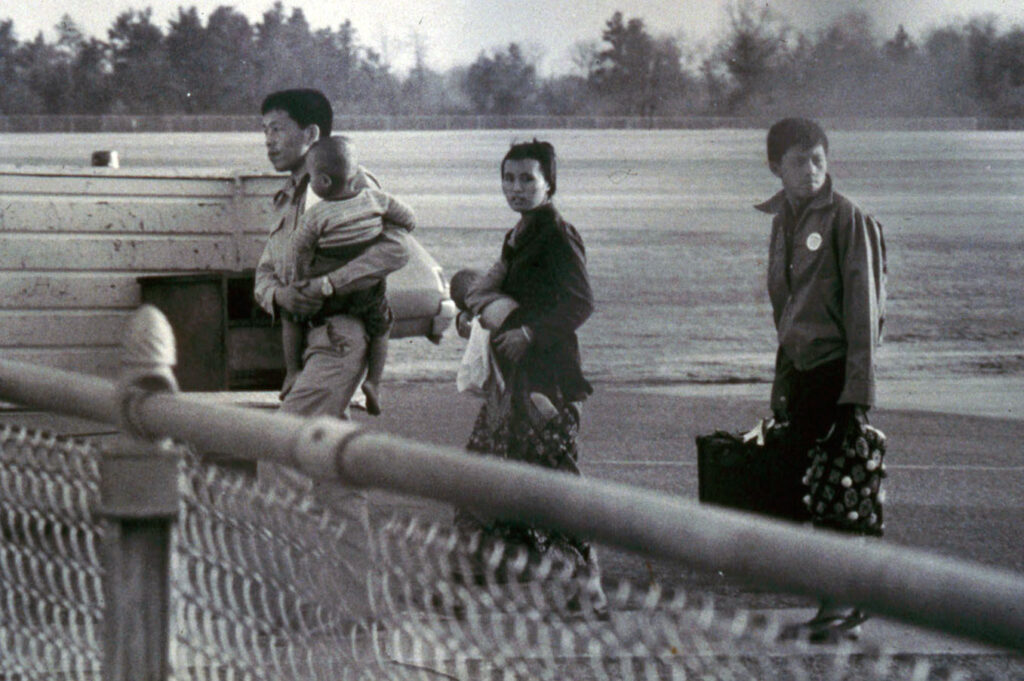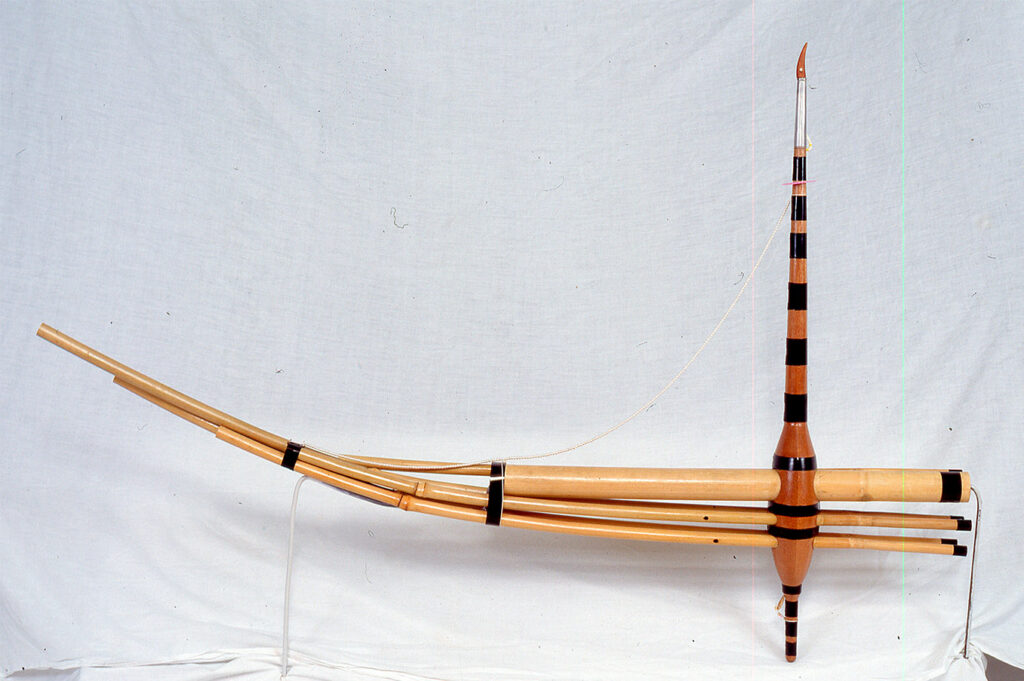In honor of Hmong Heritage Month 2021, we’re pleased to celebrate and share several Hmong collections shared by Recollection Wisconsin and our partner organizations. Hmong Heritage Month began in 2004 as an opportunity for Wisconsinites to reflect on the many sacrifices that the Hmong, or Hmoob, people have made in service to our country and to celebrate the vibrant, resilient, and diverse culture of Hmong Wisconsinites as an important part of our state’s identity.
Note: Hmong and Hmoob are pronounced the same way; Hmoob is how you spell Hmong in Hmong language. You may see these terms used interchangeably. Here, we’ve used Hmong where it describes the name of a project or collection with that spelling, and Hmoob everywhere else.
Hmoob in Wisconsin
Hmoob are the largest Asian ethnic group in Wisconsin. As allies of the United States in Southeast Asia during the Vietnam War and later stages of the Laotian Civil War, Hmoob began seeking asylum in the United States as political refugees after the communist takeover in both nations in 1975. According to the 2010 Federal Census, there were 49,240 Hmong persons living in Wisconsin, making up 0.9% of the state’s population. As of 2014, some of the largest Hmong populations in the state are located in Green Bay, La Crosse, Milwaukee, Sheboygan, and Wausau areas.
Hmong in America at Chippewa Valley Museum
In the early 1990s, then-director of the Chippewa Valley Museum (CVM) Susan McLeod embarked on a project to build relationships and collaboration with Hmoob refugee families in the Eau Claire area. Previous exhibits and projects at CVM had focused on people who had been in the Eau Claire area for centuries, like the Ojibwe, and much later, European settlers. The Hmoob immigration story was a much newer one. CVM set up an innovative, collaborative process that paired Hmoob residents with scholars and historians of Southeast Asian history to create exhibits, programs, and oral histories. These “Consultants’ Conferences” also had the benefit of gathering multiple generations and clans of Hmoob residents together, which sometimes helped residents, especially elders, feel comfortable sharing their experiences.

Part of the function was for the Hmong community itself to document and preserve their story, and other parts of it were for other members of the community who were interacting with this new population (like police and teachers and medical people, social workers) who actually didn’t really know that much about the background story. We wanted to create the kind of programming that people could participate in.
Susan McLeod, Director Emeritus, Chippewa Valley Museum
The Consultants’ Conferences laid the foundation for several projects over the course of a decade at Chippewa Valley Museum:
- A collection of crafts and artworks held by the Eau Claire Hmong Mutual Assistance Association;
- A gallery exhibit at CVM;
- Research and documentation gathered during the conferences;
- A reading discussion series, bringing scholars and Hmoob residents together to present on topics of Hmoob interest in events at CVM;
- A package of programs (book, reading/discussion series, panel exhibits), pairing Hmoob residents and American scholars in six communities nation-wide.
History is a continuum that we are all part of. What happened in the past flows into what is happening now, influencing our lives and the communities of today. CVM helps draw out these connections and bridges the distance between the past and present.
Susan McLeod, Director Emeritus, Chippewa Valley Museum
Hmong in Eau Claire Virtual Exhibit
The relationships formed during McLeod’s tenure were nurtured over years and various successive projects, and CVM and the Hmoob community collaborated again more recently to design and launch a digital exhibit, Hmong in Eau Claire.
Beginning in 2018 and launched in 2019, CVM staff worked closely with the Eau Claire Area Hmong Mutual Assistance Association (ECAHMAA) to update Hmoob materials available at CVM. Hmong in Eau Claire was led, reviewed, and approved by several Hmoob community members through ECAHMAA. This exhibit connects elders and youth, and shares Hmoob culture with young people who have little or no memories of Laos, Thailand, or the journey to the United States. Over the course of several months, archivist Liz Reuter conducted multiple conversations with Hmoob community members finding out what topic areas they thought were most important to include in the exhibit and choosing images and videos to be shared with their own community and with all Eau Claire residents. CVM also used a Wisconsin Arts Board grant to hire a UW-Madison folklorist to conduct interviews with Hmoob residents. Museum staff designed and drafted the virtual exhibit based on those conversations and with input from ECAHMAA members.
It surprised me what the community wanted to include. The section of the website on religion and ceremonies includes a section on funerals. The video that was selected includes the image of a deceased person, and my understanding was the images of deceased people wouldn’t be accessible. But the Hmoob that had reviewed the exhibit said “This is what we need to tell, so use this.” These are the ceremonies they wanted to share with their youth and with the wider community.
Carrie Ronnander, Director, Chippewa Valley Museum

Area schools seeking digital resources about Hmoob history and culture from Hmoob community members helped motivate this project. Materials about Hmoob history on the CVM website were popular so it made sense to build a virtual exhibit to reach new and younger audiences. There is still a plan to create a physical exhibit at ECAHMAA’s building in the future.
Having a community relationship like this can be hard. It requires patience, and more listening than talking. All of us local historical organizations have our own ideas of what we think others should do, but it’s important to be quiet and always be checking in with those partners and make sure you’re doing it WITH and not FOR.
Carrie Ronnander, Director, Chippewa Valley Museum
Listening to War and the Hmoob Community
Shawn Vesely worked with Recollection Wisconsin on Listening to War: Wisconsin’s Wartime Oral Histories. In 2018, Vesely began reviewing oral histories previously recorded with members of the Eau Claire Hmoob community. Vesely also met with Maij Xyooj, the Resident Librarian for South Asian Studies at UW-Madison Libraries and member of the Hmoob community who shared key knowledge to inform the project including the patriarchal structure within Hmoob communities, a strong mistrust of white Americans rooted in decades of broken relationships, and like any community, the Hmoob community itself is diverse. Respectful communication depends on understanding these facets. For this project, it was important to obtain permission from the original interviewees to digitize and publicly share their stories. Vesely originally hoped to work with ECAHMAA to facilitate conversations with interviewees, but COVID-19 required them to change their communication strategy.
Instead, Vesely began listening carefully to the oral history interviews on his own. His long personal and familial relationships with Hmoob friends and relatives informed his understanding. He understood which topics might be off-limits or controversial and he was relieved to find these interviews did not touch on those topics. It was clear from the interviews that the interviewees had shared their stories with the intention of educating American listeners. With this in mind, Vesely proceeded to craft the descriptive metadata to accompany these digitized oral histories.
Efforts to respectfully communicate with community members, to obtain clear and direct permission for use of the materials, to work closely with the community to review and approve content are all part of a culturally considerate mindset we recommend as best practice. Building relationships with community partners in order to most respectfully share their stories benefits all involved.
Recollection Wisconsin Resources
The Listening to War digital collection is available through Recollection Wisconsin and includes interviews with several Hmoob immigrants. Interviewees share their experiences during the Vietnam War as well as immigrating to the United States and Wisconsin, building lives and raising families in Wisconsin, and challenges and opportunities the Hmoob community has faced over the last several decades. The following two interviews provide excellent entry points into this collection and topic:
- An interview with Joua Bee Xiong and his teenage sons, Lar Kong Xiong and Lar Zeng Xiong, about the cultural significance of Hmoob songs and instruments
- An interview with Joua Bee Xiong, about his immigration, life experiences, education and career in Eau Claire, Wisconsin.
Both interviews are held by the Chippewa Valley Museum, originally recorded on audio cassettes, and digitized and transcribed as part of the Listening to War project.
Recollection Wisconsin also hosts over 1300 photos, text documents and audio files documenting various aspects of Hmoob history and culture, shared by local history organizations around Wisconsin. Visit our collections website and search for “Hmong” or “Hmoob” to see more!
Partner Resources
Wisconsin’s cultural heritage organizations collect, preserve and share historical resources by and about Hmoob community members, many of which are spotlighted this month! Here are just a few events and projects from our local history community members:
Wisconsin Historical Society
- Hmong in Wisconsin Essay
- Modern Jungles: A Conversation about the Hmong Refugee Experience in Wisconsin: April 29, 12 – 1 pm
- Modern Jungles: A Hmong Refugee’s Childhood Story of Survival, by Pao Lor, recently published by the Wisconsin Historical Society Press
University of Wisconsin System
- UW La Crosse Hmoob materials in digital collections
- Battlefields of Memory exhibit at UW Oshkosh
- UW Digital Collections Hmoob materials
Wisconsin Public Radio and Television Resources
- PBS Wisconsin Programs Celebrate Hmong Culture in Wisconsin
- PBS Wisconsin’s Wisconsin Biographies
- Wisconsin Public Radio: Head of Hmong Chamber of Commerce Talks about the Hmong Experience in Wisconsin
Additional Resources
- WiLS Ideas to Action Funded Project: Appleton Public Library Strikes Community Chords
- Wisconsin United Coalition of Mutual Assistance Association, Inc. (statewide)
- Hmong American Friendship Association (Milwaukee area)
- Hmong Wisconsin Chamber of Commerce (statewide)
- Hmong American Center (Wausau-Marathon County areas)
- Hmong Madison (Madison)
- Hmong Institute / Hmong American Community Certificate program (Edgewood College, Madison)
Our sincere thanks to Shawn Vesely, Carrie Ronnander, Susan McLeod, Jodi Kiffmeyer, and Liz Reuter for their contributions to this post!



You must be logged in to post a comment.